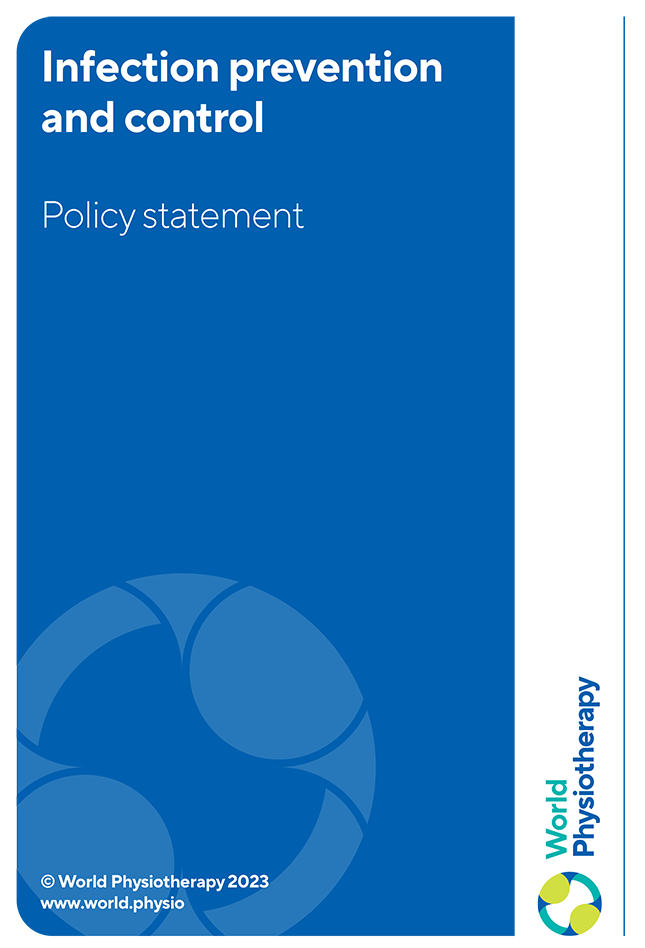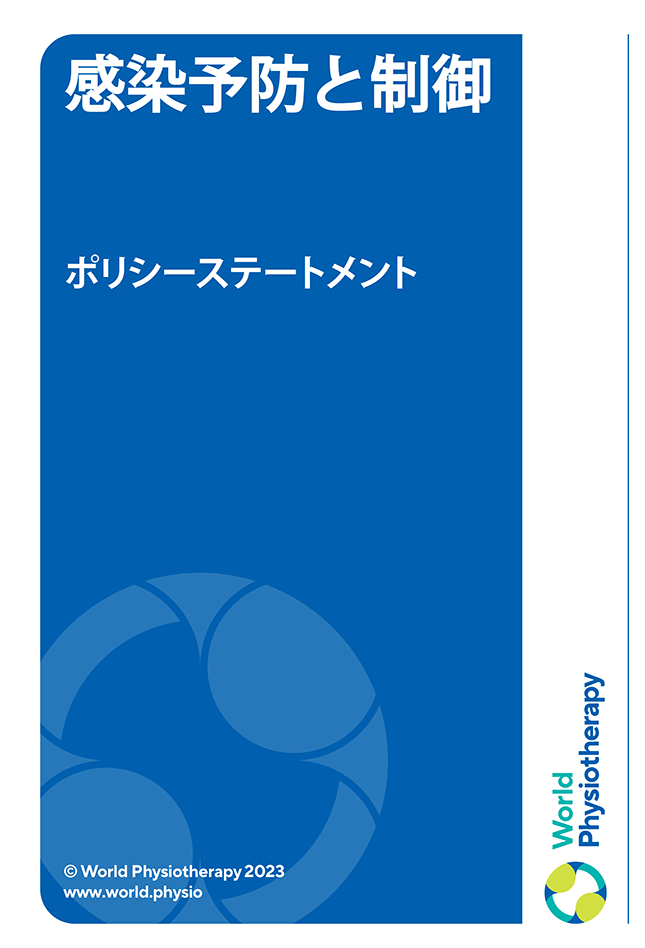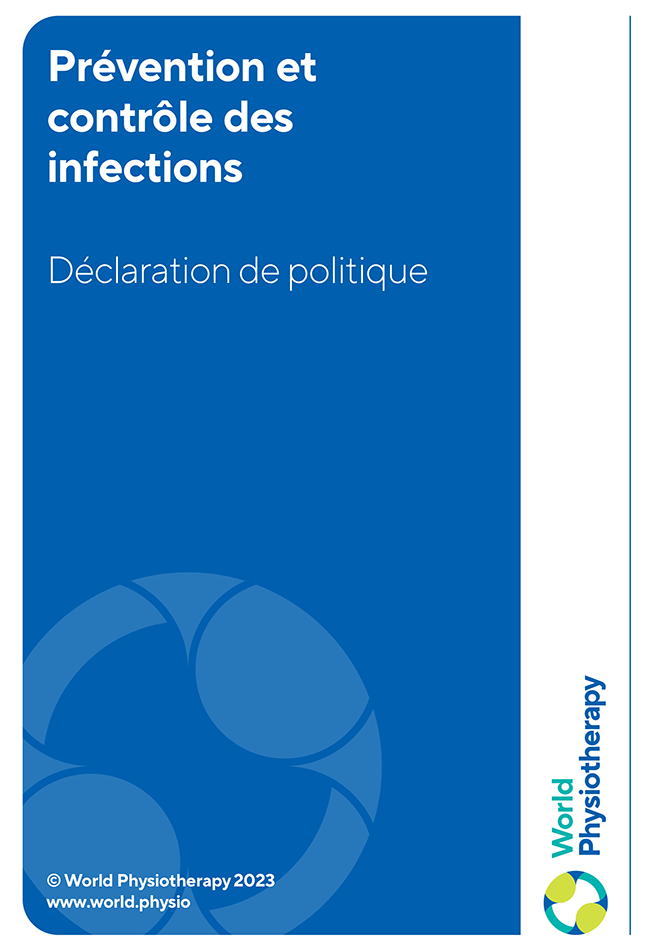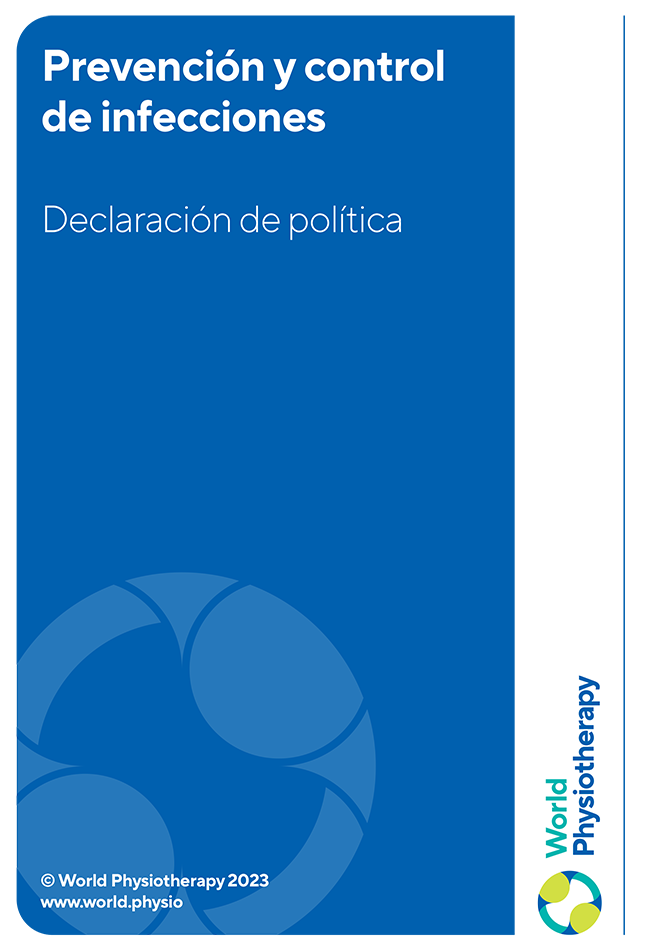World Physiotherapy advocates that infection preventionPrevention: Activities that are directed toward achieving and restoring optimal functioning, minimising impairments, limitations, and participation restrictions, maintaining health (thereby preventing further deterioration or future illness), creating appropriate environmental adaptations to enhance independent function. Primary prevention – actions to avoid or remove the cause of a health problem in an individual or a population before it arises. Secondary prevention – actions to detect a health problem at an early stage in an individual or a population, facilitating cure, or reducing or preventing spread, or reducing or preventing its long-term effects. Tertiary prevention – actions to reduce the impact of an already established disease by restoring function and reducing disease-related complications. View full list of glossary terms and control is the responsibility of all those involved in healthHealth: 'Health' is defined in the WHO constitution of 1948 as a state of complete physical, social and mental well-being, and not merely the absence of disease or infirmity. See also Health promotionSee full list of glossary terms services delivery and should be embedded into everyday practice. This relates to healthHealth: 'Health' is defined in the WHO constitution of 1948 as a state of complete physical, social and mental well-being, and not merely the absence of disease or infirmity. See also Health promotionSee full list of glossary terms service acquired infections and those that result from other sources, not just those that are considered high-risk infectious diseasesInfectious diseases: Infectious diseases are caused by pathogenic microorganisms, such as bacteria, viruses, parasites or fungi; the diseases can be spread, directly or indirectly, from one person to another. Zoonotic diseases are infectious diseases of animals that can cause disease when transmitted to humans. See full list of glossary terms. Early diagnosisDiagnosis: Diagnosis in physiotherapy is the result of a process of clinical reasoning which results in the identification of existing or potential impairments, limitations in activities and restrictions in participation and of factors influencing functioning positively or negatively. The purpose of the diagnosis is to guide physiotherapists in determining the prognosis and most appropriate intervention strategies for patients/clients and in sharing information with them. If the diagnostic process reveals findings that are not within the scope of the physiotherapist’s knowledge, experience or expertise, the physiotherapist will refer the patient/client to another appropriate practitioner. View full list of glossary terms, along with strategies to prevent, manage, and contain infections, is essential for the wellbeingWellbeing: A positive physical, social and mental state; it is not just the absence of pain, discomfort and incapacity. It requires that basic needs are met, that individuals have a sense of purpose, that they feel able to achieve important personal goals and participate in society. It is enhanced by conditions that include supportive personal relationships, strong and inclusive communities, good health, financial and personal security, rewarding employment, and a healthy and attractive environment. View full list of glossary terms of patients/clients and all healthHealth: 'Health' is defined in the WHO constitution of 1948 as a state of complete physical, social and mental well-being, and not merely the absence of disease or infirmity. See also Health promotionSee full list of glossary terms professionals.
Policy statement: Infection prevention and control





